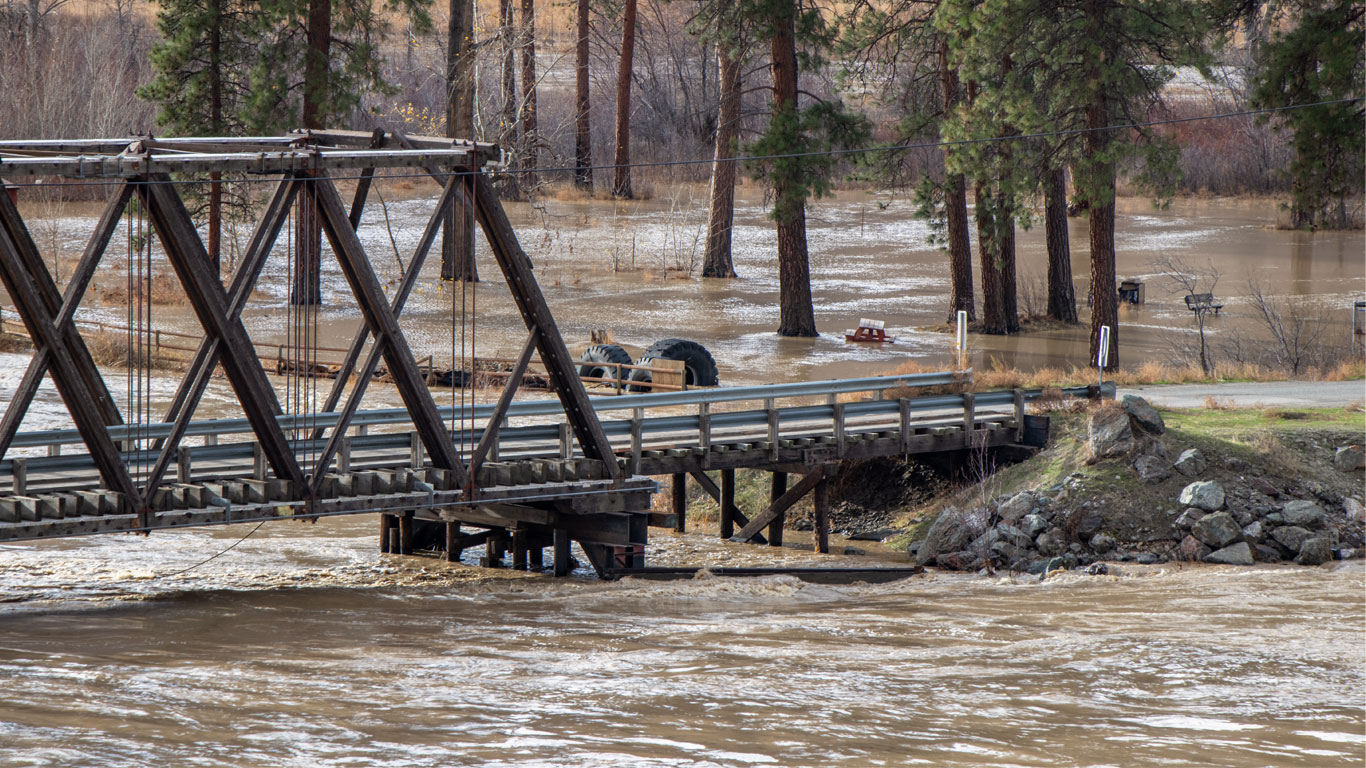
For approximately two weeks in late November, the Lower Mainland of British Columbia was almost completely cut off from the rest of the country by road and rail because of damage from intense rain, widespread flooding and landslides.
With help from our neighbours to the south, Canadian trucks loaded with essential goods were granted access to designated American highways in Washington State so store shelves could remain stocked in the Lower Mainland and Vancouver until transport links were repaired.
Every truck entering or leaving Canada must register with border authorities, and counts are shared with Statistics Canada. November data illustrate how the economic lifeblood of Canada’s third-largest city was maintained during the disruption, as Canadian truckers were able to avoid the damaged roads.
For example, the number of trucks crossing the border at Huntingdon (Abbottsford) from November 14 to 20, 2021 decreased by 97% from the same period a year earlier, as traffic was diverted to Aldergrove (+81%) and Pacific Highway (+21%).
On the rails, carloading data for November saw Canadian freight traffic from connections with American railways rise by one-third (+33%) year over year to 3.9 million tonnes. This jump may partly reflect the rerouting of some rail traffic, such as containers, via American connections around the flooded areas. Despite such efforts, the delays caused by the damaged rail lines and other factors saw shipments of wheat down by half (-50%) year over year, while coal shipments fell by over one-quarter (-27%).
According to international arrivals into Canada, there were more Canadians in the flood-stricken zones heading to the United States for day trips in November after a temporary exemption of COVID-19 testing requirements to travel for essential supplies and services was issued. By consequence, the Huntingdon crossing (Abbottsford) saw more than seven times the number of same-day travellers the week following the exemption (337), compared with a week earlier (45).
The flooding in British Columbia serves to illustrate the vulnerability of Canada’s transportation networks, and economy, to climate events.
Contact information
For more information, contact the Statistical Information Service (toll-free 1-800-263-1136; 514-283-8300; infostats@statcan.gc.ca) or Media Relations (statcan.mediahotline-ligneinfomedias.statcan@statcan.gc.ca).
